Generation 1.5
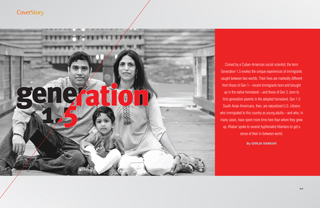
(Left) (Photo: Shutterclicks by KC)
Coined by a Cuban-American social scientist, the term Generation 1.5 evokes the unique experiences of immigrants caught between two worlds. Their lives are markedly different from those of Gen 1—recent immigrants born and brought up in the native homeland—and those of Gen 2, born to first-generation parents in the adopted homeland. Gen 1.5 South Asian Americans, then, are naturalized U.S. citizens who immigrated to this country as young adults—and who, in many cases, have spent more time here than where they grew up. Khabar spoke to several hyphenated Atlantans to get a sense of their in-between world.
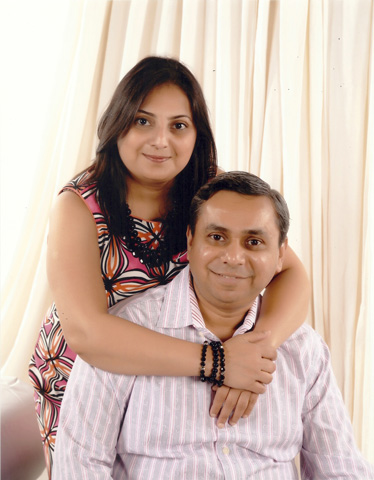
Family connections run deep for Hemali Shah (at left of photo).
The daily routines of life in India are emulated to the extent that America will allow, notes Bhavya Chaudhry, an immigration attorney who followed her husband to the United States more than 15 years ago. “Every morning we offer our prayers in the puja room. My husband’s mother lives with us, so we take care of our elders here as well.” Respect for elders in one’s family appears to be a strong South Asian value that Gen 1.5 immigrants are keen to espouse and practice in their daily life here in the States. Hemali Shah, a business systems analyst who moved to the United States in the mid-90s, agrees that “at home, we work hard to instill the Indian value of respecting elders, and maintaining our relationship with our extended family.”
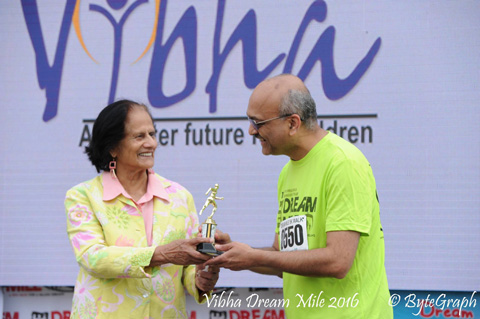
Rahul Kulkarni, seen at left with Olympian Mary D'Souza Sequeria, combines an American love of running with charity directed towards children in India. (Photo: ByteGraph)
Rahul Kulkarni moved to the U.S.in 1990. Having spent half his life here and half in India, he wholeheartedly embraces the Indian-American hyphenation. “As an Indian, I am very proud of my cultural roots,” Rahul says. His family of four, including wife and two sons, speak Marathi, their native language, at every opportunity and his younger son “studied Marathi for four years at a local cultural center.” In his early years in the United States, Rahul relied on cultural centers like the local Maharashtra Mandal in Atlanta to quench his longing for the flavors, smells, and sights of the homeland. Festivals like Diwali, Holi, and Ganesh Puja also remind Generation 1.5 of life in India, and observing these events serves as a cultural signal to the future generations, believes Rahul.
“I became a doctor so that I could take flying lessons to become a pilot,” says Rubina Imtiaz, a public health expert who moved to the United States from Pakistan in 1980. Rubina, the eldest of four siblings, grew up in Lahore. “Whatever you do, make sure you’re financially independent, my mother would tell us,” she reminisces. And so, Rubina attended medical school in Pakistan, and moved to the United States as a young adult in her 20s.
Rubina’s experience exemplifies the stories of many of us immigrants who grew up in one country and moved to another, keeping memories of the homeland alive through everyday practices and customs, even as we embraced the new customs, rituals, and lifestyles of our adopted homelands. We are neither here nor there but belong in both. We’re Indian, we’re Pakistani, Bangladeshi, but we’re also the first in line at our polling stations in suburban America, and the first to extol the virtues of the American constitution. We are Generation 1.5. We were born in our countries of origin but call another country home. We enjoy masala chai and kurmures at tiffin time, and a good barbecue and beer on a warm summer afternoon. We nod along to T. M. Krishna’s alapana and brave the mercurial May weather for a weekend of jazz at Piedmont Park.
The everyday experience
South Asians, and Indians in particular, first migrated to the United States in the late 1800s and early 1900s. Farmers from Punjab moved to the West Coast, and merchants from West Bengal, to the East Coast. Generations later, South Asians continue to migrate to the United States to pursue higher education, economic opportunities, or follow family members.
From a mere 10,000 in the 1960s, the number of Indian immigrants residing in the U.S. has soared to 2.4 million as of 2015, out of a total of over 3.4 million immigrants from South Asia. Often hailed as model minority, Indian and South Asian immigrants have left their mark in many fields, including medicine, academia, information technology, and government. But behind the glamour and glitz of the high achievements resides the uniquely Indian and South Asian ways of everyday life that perhaps contribute to the community’s general success in the United States. Food, faith, and family, says Generation 1.5, are the cornerstones of their lived experiences.
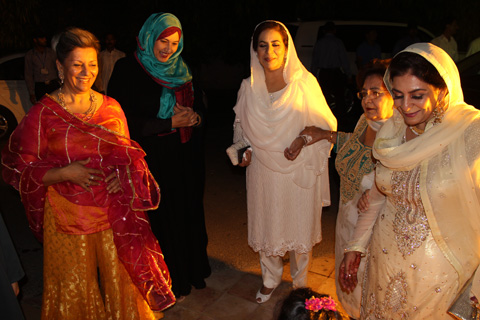
Rubina Imtiaz (left) reminisces about the long trips she made in the 1980s to a hole-in-the-wall market for desis.
“Food, in my opinion, is the most important aspect of our culture. We still know and understand what home cooked food is all about!” claims Satish Venkat, a Generation 1.5 immigrant. He adds, “Coming home to a home-cooked Indian meal reminds you of India in a way that nothing else can.” Rubina, who lived in New Jersey in the 80s, reminisces about the long trips to a hole-in-the-wall market in Trenton that would sell goat meat and goat milk, food products that reminded her of life in Pakistan, adding, “Back then getting desi ingredients was a challenge. Today, everything is available here!”
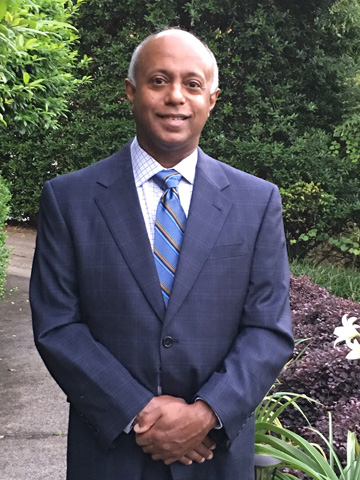
For Suku George (right), culture, faith, and community are important.
For Generation 1.5 immigrants like Suku George, a gastroenterologist in Marietta, GA, church and faith hold his community together. The Malayali Christian church, suggests Suku, is the glue that holds the Malayali Christian community together. “Our traditional church services are long and the commute to the church itself takes over an hour. It takes up most of Sunday to drive to our church, attend the service, and wait for our children to finish Sunday school. By the time you get back home, it is close to 3 or 4 p.m. in the afternoon and the whole day is gone. Going to a local American church could be very enticing since it is usually close to home and service is usually just an hour. However, parents consciously make the decision to attend the Indian church so that their children can experience our culture and values.” Rubina agrees, and adds, “I still say my prayers five times a day, and can still practice it here [in the United States].”
When in America….
As the sandwich generation, Generation 1.5 embraces the best of both worlds—the land of their origin, India, and their adopted homeland, America.
If family, faith, and food are the linchpins of the
Indian and South Asian way of life, how do America and American values influence the lived experience
of Gen 1.5?
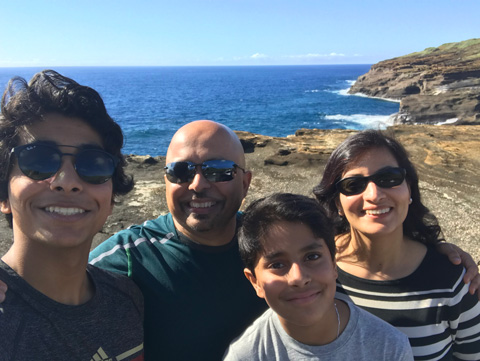
For Avnish and Alka Chopra (left), home means Atlanta.
America has taught me to “work hard, play hard!” says Avnish Chopra, who moved to the U.S. in 1991. “I moved to the United States with $20 in my pocket. I worked hard to get to where I am today.” For Bhavya, America is synonymous with independence. She adds, “I also appreciate that personal space and privacy are respected here in the States. I like that I am able to travel to many countries using my American passport without a visa!”
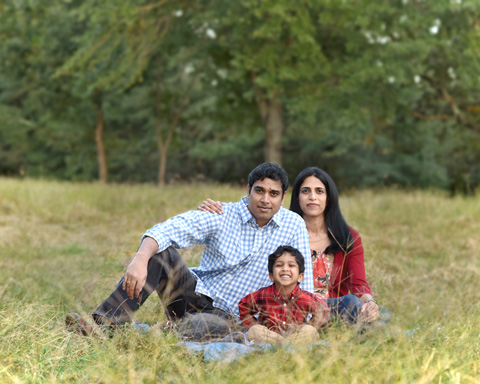
Tuhina Kola (R) and Praveen Konagari (L). While Tuhina follows American traditions and appreciates the freedom the country offers, she also feels the enormous influence of her Indian
value system.
(Photo: Shutterclicks by KC)
For Tuhina Kola, who grew up in Andhra Pradesh, and moved to the United States for higher education 19 years ago, observing the American traditions of Halloween and the Fourth of July allows immigrants like her to appreciate aspects of American life that they may not have been exposed to as children. She appreciates the independence that one enjoys in America. “You do everything by yourself here…you are on your own.” America, it seems, lets you be you. Hemali Shah argues, “The American culture encourages you to truly believe in yourself and walk the path you choose to walk and not be forced to follow the rules that your family or elders might have laid out for you.” In America, she says, “The sky is the limit to what you can achieve.” Rahul Kulkarni agrees, adding, “In America, if you give your best in everything you do, you will be rewarded.”
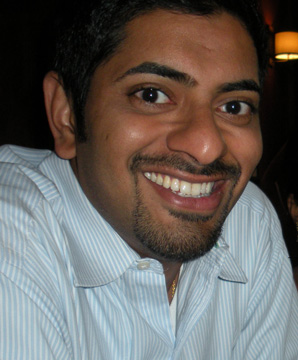
Satish Venkat (left), like many other Gen 1.5 Indian-Americans, has embraced volunteerism.
Satish and Tuhina both embrace volunteering in their everyday life, and regard volunteerism as an inherently American value. Notably, Americans have consistently ranked among the top nations for individual charitable giving worldwide. The spirits of volunteerism and charity have been hallmarks of American society, and quite naturally, these values have seeped into the fabric of immigrant experience in America. Satish also adds that the great outdoors of America has instilled in him a respect for nature, and a spirit of exploration. Atlantans will agree that Generation 1.5’s love for the great American outdoors is most evident in places like the Great Smoky Mountains National Park where, come fall season, the population of towns like Gatlinburg and Cherokee nearly double with immigrant families from Georgia, the Carolinas, and Tennessee with their sari-clad grandmothers and aunties in tow!
Desi values with American accent?
Reconciling the deep-rooted value systems of an ancient, spiritual civilization with those of a modern, tech-driven society is a tough call for Gen 1.5. Is India so hardwired in us that we cannot appreciate the nuances of another culture? Then again, what kind of values do we pass on to future generations? Bhavya argues that as immigrants, “We have to integrate—we have to be able to greet strangers on the street but also know that relationships may never get deeply meaningful. In India, neighbors can easily become life-long friends, but that’s not the case in the States.”
Having spent 19 years in the United States, Tuhina still feels the enormous influence of her Indian value system. “I do try to judge a situation by the merit of the argument, but still cannot disrespect elders,” says she. Indian value systems espouse respect for authority figures with an expectation that hierarchy and authority, whether formal or informal, will remain unchallenged, whereas American value systems espouse inquiry, critical thinking, and challenging the status quo. These value systems meet and collide in the Indian immigrant experience, and result in interesting outcomes. As Hemali says, “I try to embrace those values and beliefs which nurture you to be a model human being and not focus on what country or caste or human race you belong to, but believe the world is one place and not a divided place.”
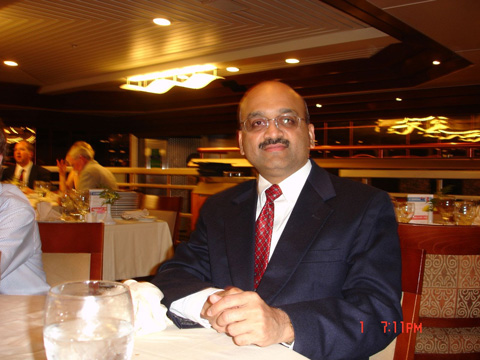
Rahul Kulkarni (right).
For immigrants like Rahul, the very act of practicing his native language, Marathi, is a conscious choice and a deliberate attempt to choose aspects of his native culture for passing on to future generations. “We practice yoga and meditation, make Indian food at home, and visit temples occasionally,” Avnish says, “but we do not necessarily go out of the way to participate in Indian associations. We don’t hang out only with Indians. Why else would we have come to the United States?”
Bhavya instills in her children the value of saving money, more so because, “it is a habit that does not appear to be popular here in the States,” and, she adds, “as a counter point to that, a fierce sense of freedom, independence, and opportunity to pursue anything!”
Middle-class life in today’s India is a life of dependencies, Avnish argues, saying, “We are chained to other people—from cleaning services to maids, to drivers, to cooks. In America, the flipside of doing everything by yourself is that you are the master of your time.” Again, independence and freedom emerge as truly American values that Generation 1.5 espouses and passes on to future generations.
Tuhina argues that as Generation 1.5, we have to try harder to inculcate Indian values in future generations as “children are immersed in the environment here and will automatically pick up American values.” Suku adds, “We strive to emphasize cultural values that have worked in the past—a focus on educational excellence and an emphasis on the family unit as the key to getting ahead in life. We also hope to support our children as much as possible with capital and financial resources that will help them get ahead in this competitive world. The analogy would be the external fuel tanks of a Falcon heavy lift rocket. The support will allow children to reach higher and farther than if they tried to do it alone.”
Life in 21st century America is gadget-driven. Children are born not with silver spoons but with smart devices. Rubina bemoans the onslaught of technology in everyday life in America. Says she, “To me, what is lost is what is lost in technology. We read a lot of books growing up. Books let you run wild with your imagination.”
Nostalgia
The memories of the sights, sounds, and smells of the motherland evoke a deep nostalgia and ache for all things past. But Generation 1.5 has learned to cope. Besides, the India of today is a rapidly morphing nation, often quite at variance with our soft-focus memories of a more leisurely era. Having spent more than 15 years away from the
country of her birth, India, for Bhavya, conjures up images of “the sabjiwali hawking produce outside
your doorstep, rickshaws spewing exhaust fumes,
and the aromas of pushcart foods.”
“Ten years ago,” she adds, “I used to wake up every day wanting to return to India. As the years went by, I would want to extend my trips back to India over several months. Now, I don’t experience that angst anymore!” While acknowledging that the connection to India will always remain strong, Bhavya has an interesting observation: “I work in immigration so I meet many immigrants from different countries…I’ve observed that the pull towards India is much stronger than the pull towards other countries.”
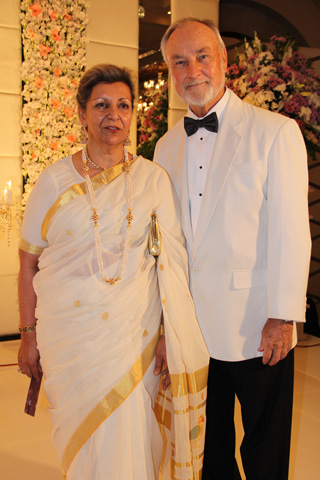
Rubina Imtiaz.
Money and time seem to be commodities in today’s South Asia, Rubina argues. “Wealth has always been a driving force in the West, but in Pakistan, and South Asia, somehow it mattered less how wealthy we were, growing up. People always had the time to chat with neighbors under the shade of a tree or on the steps outside your front door,” says Rubina.
For Generation 1.5 Indians who’ve spent a significant time in America with its leafy suburbs, clean streets, and picket-fenced lawns, modern-day India can be overwhelming. Says Avnish, “I get a culture shock when I go to India! In my mind’s eye, the picture of India is the India of the 1990s.” Suku agrees, and adds, “The general chaos of life in India is difficult to adjust to after living in the U.S. for a while. Traffic rules are not observed, garbage is strewn everywhere, and appointment times are never kept!”
Their nostalgic memories often get rudely shaken up when they encounter the reality of contemporary India. Bhavya reminisces about an India where “when we grew up, we didn’t know about people’s backgrounds and it didn’t matter. We all got along just fine.” Today’s India, she says, is different: “There is extremism everywhere…people talk about caste and religion in a way that is not helpful.” Satish argues that there is a constant impulse to ape the West in India, and “the absolute and pervasive idolization of Western customs and lifestyle is a bit disconcerting.”
What’s chaos to some is the dizzying heights of street theater to others. There is a casualness to life in India that Generation 1.5 pine for. Says Suku, “I miss the times when you could drop in at a friend’s/family home for a quick chat without calling ahead and prearranging the visit as it is done here in the States. We have morphed into a more formal culture which raises the risk of loneliness as we age.” Growing up in India meant Diwali, Christmas, and Eid spent with the extended network of family members. Family ties are often weakened if not lost when we emigrate to the States and although technology has made it easier to stay in touch, it’s not quite the same as sharing chai on a Sunday afternoon at grandmother’s place. “I miss having aunts and uncles in close proximity and being able to stop by for a chat and chai. I’ve missed out on countless weddings of extended family members…not having people that you grew up with around you—that makes me sad,” says Tuhina.
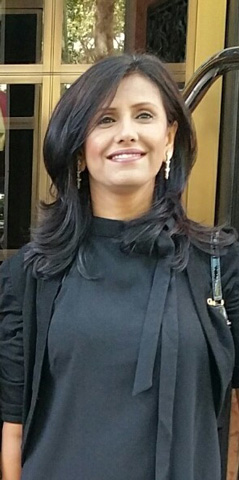
Bhavya Chaudhry (left) says, “I feel a bit like Trishanku—my heart is still in India, but my home is in America.”
Where do they belong?
If who we are as individuals is a function of where we came from, how can people who embrace more than one place of belonging define their identities? Bhavya Chaudhry expresses this conundrum by tapping into Indian mythology: “I feel a bit like Trishanku—my heart is still in India, but my home is in America.” Trishanku, a character from Hindu mythology, wanted to ascend to heaven in his human physical form but was prevented from doing so, and consequently trapped between heaven and earth. Tuhina says, “As someone who was born in India, my roots are still Indian. It would be hard for me to identify myself as American. India is ingrained in me because I’ve spent twenty years there. Having lived in the United States, I have also absorbed much of American culture. And, if I were to go back to India, I am not sure that I could live there anymore”—a sentiment that is echoed by Avnish, who argues, “India is no longer home for me. I go to weddings and I visit temples…but Atlanta is home to me now.”
The generation of South Asians and Indians who are born in the States will miss out on the essential Indian experience, argues Generation 1.5. They “may be a little confused growing up. When they’re toddlers, they speak our language, watch Indian TV, and eat Indian food, and then they start attending school and embrace the mainstream culture. They may rebel in the beginning but have figured out a way to fit in. When with Indian friends, my daughter speaks differently, with an accent!” With the exposure to Indian traditions at home, Avnish says, the first generation born in America embrace their parents’ straddling of cultures, to the extent that, “when we’re out and about now, my kids would rather we speak in Hindi, and say, “Hindi mein bolo! [Speak in Hindi!]”
American Born Confused Desi or ABCD is the throwaway term for generations of people of Indian origin born and brought up in the States. Inherent in that abbreviated form is a finger-wagging rebuke of people straddling cultures—an assumption that to embrace more than one culture is to succumb to confusion over identities—belonging neither here nor there. The stories and the everyday lived experiences of Atlanta’s Generation 1.5 chronicled here tell another story—that being South Asian in America is to embrace the best of both worlds, belonging neither here nor there, but everywhere.
|
Forking a fish * Suku George says, “I love spicy Malayali food which is traditionally eaten with your hands. It is practically difficult to debone a deep fried, spicy, bony fish with anything but your hand. But out here in America, we tend to use a fork to keep the “curry smell” off our hand so we don’t smell odd in the presence of our American friends and customers.” * Tuhina Kola moved from Texas to small-town Wisconsin many years ago and walked into a store where she encountered an elderly Indian woman who looked Tuhina up and down, and asked in Hindi, “Aapke husband kahaan kaam karte hain?” (Where does your husband work?). * Back in 1995, when Bhavya Chaudhry was new to America, people would ask her where she was from. “I would say, India, and they would ask if there were elephants on the road, and snakes on the sidewalks!” * Bhavya reminisces about her early missteps in America, “When I moved to America in 1995, I was not used to using a dishwasher. I used regular dish soap in the dishwasher. Needless to say, we spent hours cleaning up a flood of lather and soap water that ran out all through our kitchen, halfway to our front door!” |
Girija Sankar, a freelance writer and book reviewer, works in global health and development in Atlanta.
Enjoyed reading Khabar magazine? Subscribe to Khabar and get a full digital copy of this Indian-American community magazine.
blog comments powered by Disqus












